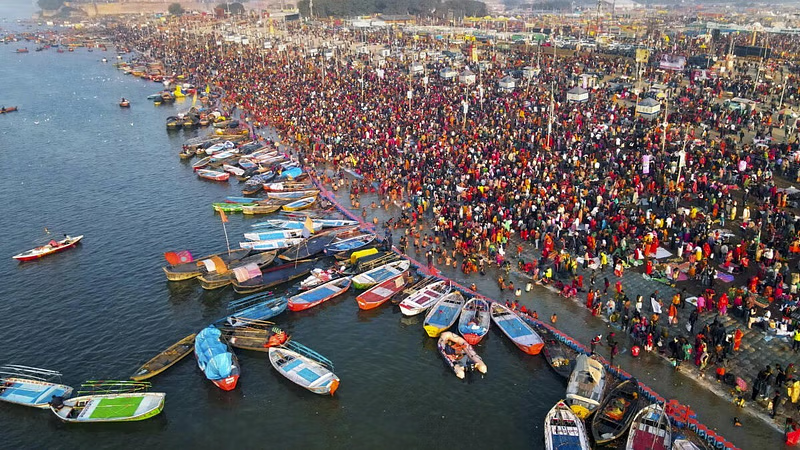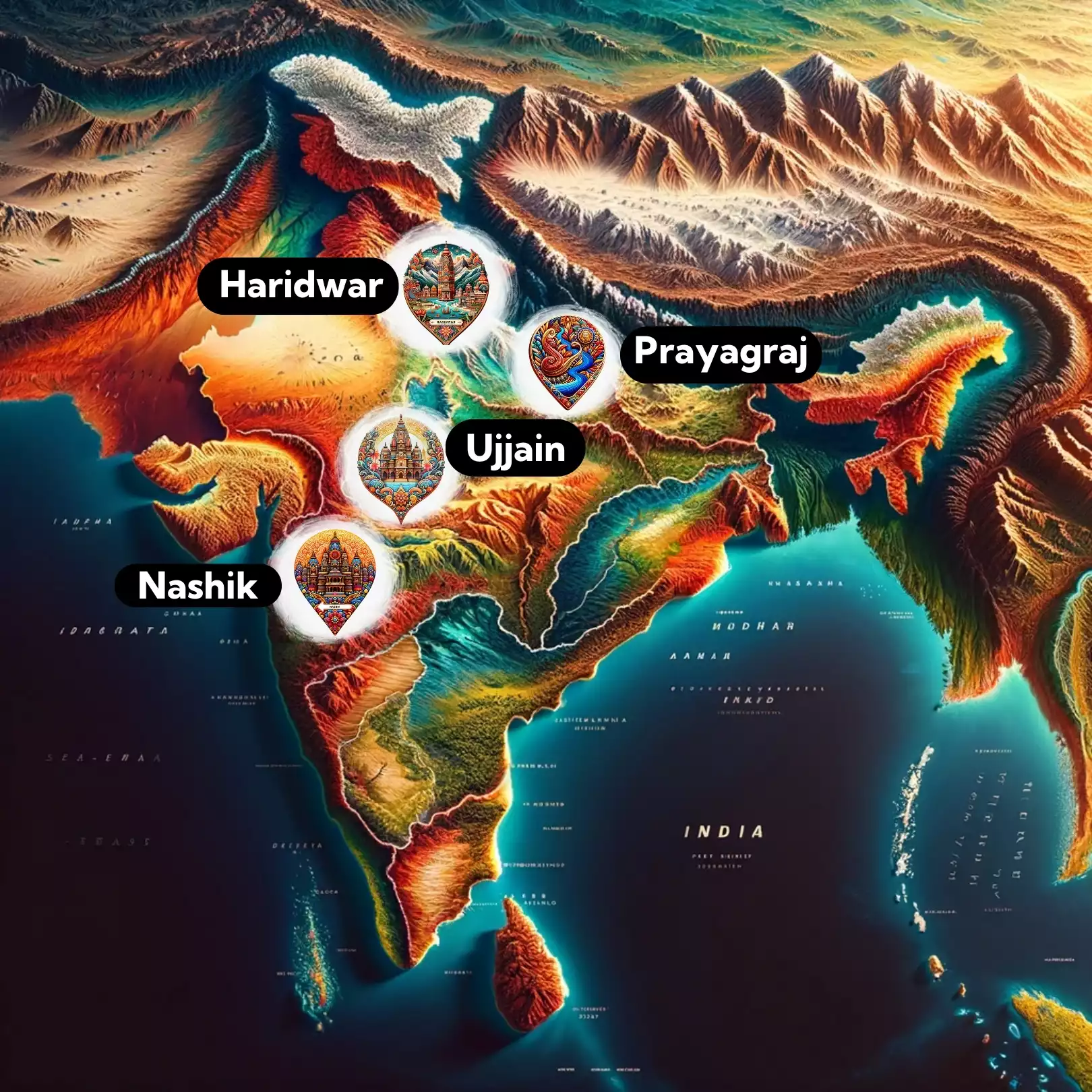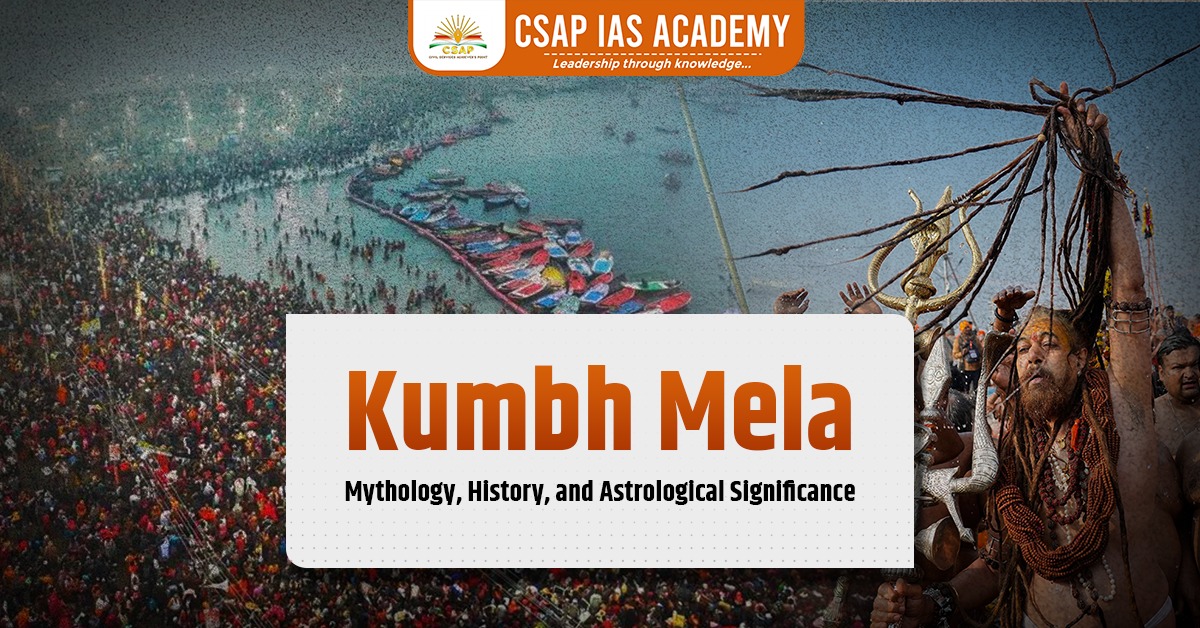The Kumbh Mela is more than just a festival; it is a living testament to India’s timeless spirituality, cultural vibrancy, and ancient traditions. Known as the largest spiritual gathering on Earth, this sacred event takes place at four holy locations in India, where millions of devotees immerse themselves in the sacred rivers to cleanse their souls.
The roots of Kumbh Mela trace back to Hindu mythology, where gods and demons fought for the elixir of immortality. Its connection with celestial alignments makes it a festival intertwined with the mysteries of Vedic astrology. Over centuries, the Kumbh Mela has evolved, blending faith, rituals, and history into an extraordinary celebration of devotion and unity.
In this blog, we will explore the mythology, historical evolution, astrological significance, and the deep spiritual meaning of the Kumbh Mela. Let’s embark on this fascinating journey into one of humanity’s most profound cultural and spiritual traditions.
Why is the Maha Kumbh Meta in the news?

The Maha Kumbh Mela is being hosted in Prayagraj in January 2025. This religious gathering, held every 12 years, is one of the largest assemblies of devotees globally and holds immense mythological, historical, and spiritual significance in Hinduism.
What is Kumbh Mela?
- The Kumbh Mela is a religious festival that rotates between four locations: Haridwar, Prayagraj, Ujjain, and Nashik-Trimbakeshwar.
- It is held every 12 years at each location, with an Ardh Kumbh (half Kumbh) every 6 years at Prayagraj and Haridwar.
- These locations are situated on the banks of sacred rivers:
- Haridwar: Ganga
- Prayagraj: Confluence of Ganga, Yamuna, and the mythical Saraswati
- Ujjain: Kshipra
- Nashik-Trimbakeshwar: Godavari
Mythological Origins
- The word Kumbh means pitcher.
- The story is rooted in the Samudra Manthan (churning of the ocean), where Devas (gods) and Asuras (demons) churned the ocean to retrieve the amrita (elixir of immortality).
- To protect the amrita from Asuras, Jayant, the son of Indra, fled with the pitcher, spilling drops of amrita at four locations — Haridwar, Prayagraj, Ujjain, and Nashik.
- These drops sanctified the sites, leading to the celebration of Kumbh Mela at these locations.
Astrological Significance
- The timing and location of the Kumbh Mela are determined by astrological alignments of the Sun, Moon, and Jupiter:
- Haridwar: When Jupiter is in Aquarius (Kumbh Rashi) and Sun and Moon in Aries and Sagittarius.
- Prayagraj: When Jupiter is in Taurus, and Sun and Moon are in Capricorn (aligned with Makar Sankranti).
- Nashik-Trimbakeshwar: When Jupiter is in Leo (Simha), and Sun and Moon are in Cancer.
- Ujjain: When Jupiter is in Leo, and Sun is in Aries.
- These celestial alignments are believed to imbue the rivers with spiritual potency, and bathing in them during Kumbh accrues punya (spiritual merit) and washes away sins.
Cultural and Religious Significance
- Spiritual Renewal:
- Devotees believe that bathing in the sacred rivers during Kumbh removes sins and brings salvation.
- It is a period for intense religious devotion and self-reflection.
- Gathering of Sadhus:
- Various Sadhu Akhadas (ascetic groups) participate, showcasing unique spiritual practices and philosophies.
- Devotees have the opportunity to meet and learn from spiritual leaders.
- Cultural Unity:
- The Mela attracts people from diverse backgrounds, symbolizing unity in diversity and reinforcing the shared cultural heritage of India.
Historical Background of Kumbh Mela
- References to Kumbh Mela are found in the Vedas and Puranas, making it an ancient tradition.
- The modern form of the festival is believed to have evolved over the last two centuries, gaining prominence as one of the largest religious gatherings in the world.
Scale and Organization
- The Kumbh Mela is recognized as a UNESCO Intangible Cultural Heritage.
- It involves extensive planning and infrastructure, including:
- Tent cities for millions of pilgrims.
- Sanitation facilities, healthcare, and security arrangements.
- Religious and cultural programs to promote traditional art and heritage.
Significance of the Four Locations

- Haridwar: Associated with the Ganga’s purity and sanctity in Hinduism.
- Prayagraj: Known as the Triveni Sangam, symbolizing spiritual and physical confluence.
- Ujjain: The Kshipra River is believed to have emerged from Vishnu’s heart in his Varaha (boar) avatar.
- Nashik-Trimbakeshwar: The Godavari is considered the Ganga of the South, holding immense spiritual importance.
Impact and Global Recognition
- Economic Impact: Boosts tourism and local economies through pilgrim expenditure.
- Global Pilgrimage Site: Attracts millions, including international visitors, highlighting India’s cultural and religious influence.
- Environmental Concerns: Requires efforts to balance the ecological impact of large gatherings with river conservation.
Conclusion
The Kumbh Mela is a confluence of faith, mythology, history, and astrology, symbolizing India’s rich cultural and spiritual heritage. Its global recognition as a UNESCO heritage event and the massive scale of participation underline its importance as a testament to enduring traditions and collective spirituality.
Read: California Wildfires
Download App:










